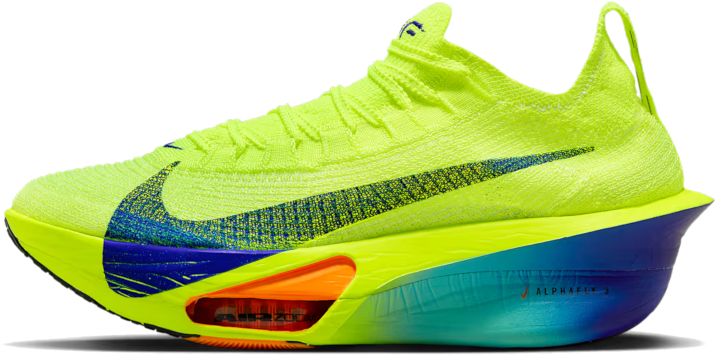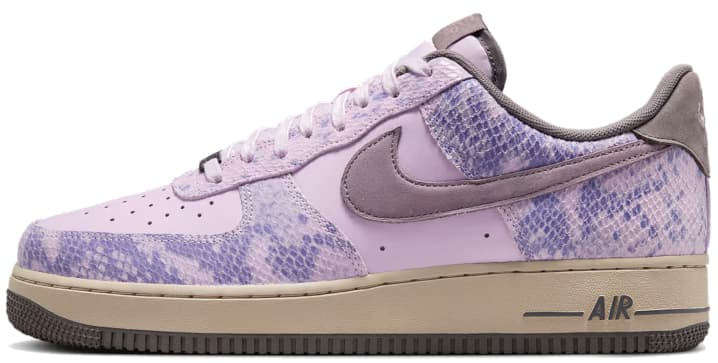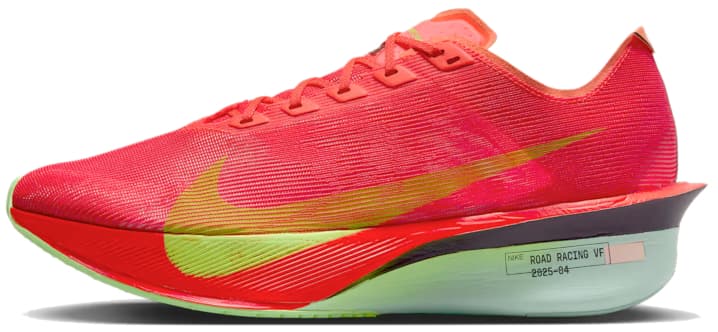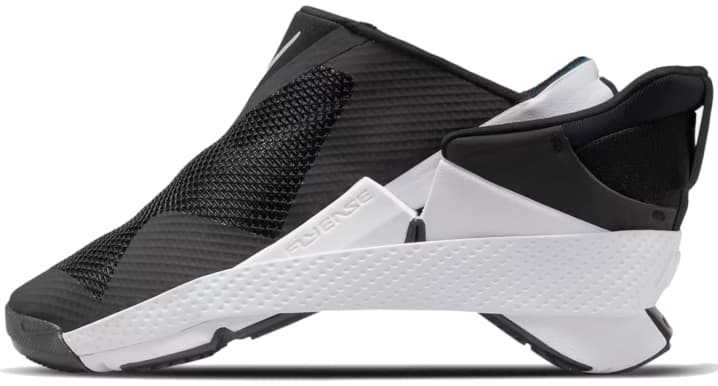Nike has long been synonymous with athletic excellence, particularly in the world of running. From its humble beginnings with classic designs to its groundbreaking innovations, the evolution of Nike running shoes reflects the brand’s commitment to performance, style, and technology.
In this blog post, we will explore how Nike has transformed its running shoe lineup over the years, showcasing the iconic models that laid the groundwork and the cutting-edge advancements that cater to today’s runners. Whether you’re a seasoned marathoner or a casual jogger, understanding this journey will not only enhance your appreciation for the brand but also inform your next shoe purchase.
Join us as we delve into the fascinating history and future of Nike running shoes.
Table of Contents
- The Beginnings: Classic Nike Running Shoes
- The Rise of Technology: 1980s to 2000s
- Modern Innovations in Nike Running Shoes
- The Future of Nike Running Shoes

Brief Overview of Nike’s History in the Running Shoe Market
Nike’s history in the running shoe market began in 1964 when co-founders Phil Knight and Bill Bowerman launched Blue Ribbon Sports, initially acting as a distributor for Onitsuka Tiger shoes. In 1971, the company rebranded as Nike, named after the Greek goddess of victory. The introduction of the Nike Cortez in 1972 marked its first major running shoe, gaining popularity among athletes and casual runners alike.
In 1979, Nike released the Tailwind, featuring the first-ever air cushioning technology, which revolutionized the running shoe industry. The 1980s saw the launch of iconic lines such as the Nike Air Force and Nike Air Max, further solidifying Nike’s presence in running. The company continued to innovate with technologies like Nike Shox in the early 2000s and Flyknit in 2012, focusing on performance, comfort, and style.
Throughout the years, Nike has sponsored elite athletes, including Olympic champions and marathon winners, enhancing its reputation in the running community. Today, Nike remains a dominant force in the running shoe market, continually pushing the boundaries of technology and design while maintaining a strong connection with runners worldwide.
Importance of Innovation in Athletic Footwear
Innovation in athletic footwear is crucial for enhancing performance, comfort, and safety. Advanced technologies such as responsive cushioning, breathable materials, and lightweight designs improve athletes’ efficiency and reduce the risk of injury. Continuous development in footwear design also caters to specific sports and activities, allowing for tailored support and adaptability. Additionally, innovation drives market competitiveness, encouraging brands to push boundaries and integrate sustainability into their products.

The Beginnings: Classic Nike Running Shoes
The Nike Cortez: A cultural Icon
The Nike Cortez, originally released in 1972, has evolved into a significant cultural icon, symbolizing the intersection of sports, fashion, and social movements. Its sleek design and comfortable fit made it a popular choice among runners, while its association with prominent figures, such as Tom Hanks in Forrest Gump, and its adoption by hip-hop artists, solidified its status in popular culture.
The Cortez has been embraced by various subcultures, including the Chicano community, where it represents pride and identity. Its presence in streetwear and fashion trends continues to keep it relevant, making the Nike Cortez a timeless emblem of style and cultural significance.
The Air Tailwind: Introducing Air Cushioning Technology
Air Tailwind is an innovative air cushioning technology designed to enhance comfort and performance in footwear. It utilizes a system of air chambers strategically placed within the sole to provide superior shock absorption and support. This technology adapts to the wearer’s foot strike, promoting a smooth transition and reducing impact stress during activities.
The lightweight construction ensures agility, while the responsive cushioning helps maintain energy return, making it ideal for both athletic and casual footwear. Air Tailwind aims to deliver an elevated experience in comfort, enhancing overall foot health and performance in various environments.
The Impact of the 1972 Olympic Games
The 1972 Olympic Games significantly impacted the Nike brand by enhancing its visibility and credibility in the athletic footwear market. This particular Olympics showcased elite athletes, many of whom wore Nike shoes, which helped to associate the brand with high performance and competition.
The event also coincided with Nike’s marketing push, including innovative advertising strategies that positioned the brand as a leader in sports gear. This exposure contributed to Nike’s growth, leading to increased sales and recognition, ultimately transforming it into a global sportswear powerhouse.

The Rise of Technology: 1980s to 2000s
The introduction of Nike Air Technology
Nike Air technology was first introduced in 1979 with the release of the Nike Air Tailwind sneaker. This innovative cushioning system uses air-filled pockets to provide better shock absorption and comfort for runners. The technology evolved over the years, becoming a hallmark of Nike’s performance footwear and expanding into various models across different sports and lifestyle categories.
The Development of the Nike Zoom Series
The Nike Zoom series was introduced in the late 1990s, revolutionizing the footwear industry with its innovative cushioning technology. The initial models focused on providing a lightweight feel and responsive cushioning, appealing to athletes seeking performance enhancement. The Zoom Air technology, featuring pressurized air in a durable membrane, allowed for greater flexibility and energy return.
Key releases like the Nike Air Zoom Flight 95 showcased this technology, setting a new standard for basketball shoes. Over the years, the series expanded to include various sports, emphasizing comfort and performance, solidifying Nike’s position in the athletic footwear market.
Collaborations with Athletes and Designers
Nike’s early collaborations with athletes and designers were pivotal in establishing its brand identity and market presence. The partnership with basketball star Michael Jordan in the mid-1980s led to the creation of the Air Jordan line, which revolutionized athletic footwear and culture. Nike also collaborated with tennis legend Andre Agassi, launching signature shoes that combined performance with vibrant designs.
Additionally, the collaboration with designer Tinker Hatfield brought innovative design elements to Nike’s products, significantly impacting sneaker aesthetics. These early collaborations not only boosted sales but also helped position Nike as a leader in athletic innovation and fashion.

Modern Innovations in Nike Running Shoes
The Flyknit Technology and Its Advantages
Nike’s Flyknit technology utilizes a unique knitting process to create a lightweight, form-fitting upper for footwear. This innovative method allows for a reduction in material waste and provides a seamless, sock-like fit that enhances comfort and support. Advantages include:
- Lightweight Design: The knitted fabric significantly reduces the overall weight of the shoe.
- Breathability: Flyknit construction promotes airflow, keeping feet cooler during activity.
- Custom Fit: The adaptive fit molds to the foot’s shape, providing personalized comfort.
- Flexibility: The material allows for natural foot movement, enhancing performance.
- Durability: Flyknit uppers are designed to withstand wear and tear, maintaining shoe integrity.
- Sustainability: The manufacturing process minimizes waste, contributing to eco-friendly practices.
Nike React Foam: Enhancing Performance and Comfort
React foam technology is an innovative cushioning material designed to provide superior performance and comfort in footwear. It features a lightweight, responsive structure that offers excellent energy return, allowing for better propulsion during athletic activities.
The foam adapts to the shape of the foot, providing personalized support and reducing impact stress on joints. Its durability ensures long-lasting use, while its breathability enhances overall comfort by keeping feet cool and dry.
Sustainability Efforts in Modern Designs
Nike’s sustainability efforts in modern running shoe designs focus on reducing waste, utilizing recycled materials, and implementing eco-friendly manufacturing processes. The company incorporates recycled polyester, sustainable rubber, and organic cotton in its shoe production.
Nike also emphasizes circularity through its Move to Zero initiative, aiming for zero carbon and zero waste. Innovative designs include the use of Flyleather, made with at least 50% recycled natural leather fiber, and the Nike Air soles, which are designed to reduce material use. Additionally, Nike promotes the recycling of old shoes through its Reuse-A-Shoe program, transforming them into new products.

The Future of Nike Running Shoes
Predictions for Upcoming Technologies
Nike is likely to focus on advancements in smart footwear, integrating sensors for performance tracking and personalized coaching. Expect innovations in sustainable materials to enhance eco-friendliness, along with augmented reality experiences for enhanced shopping. Additionally, advancements in 3D printing may enable customization of products, while AI-driven data analytics could optimize supply chain and inventory management.
The Role of Consumer Feedback in Design Evolution
Consumer feedback plays a crucial role in Nike’s design evolution for its running shoes. By actively listening to runners’ experiences, preferences, and performance needs, Nike can identify areas for improvement. This feedback informs material choices, cushioning technology, and overall shoe structure, ensuring that products meet the demands of athletes.
Additionally, incorporating insights from user reviews and surveys helps Nike stay aligned with market trends and consumer expectations. Ultimately, this responsiveness to feedback enables Nike to create innovative and high-performing running shoes that resonate with their target audience.
Nike’s Commitment to Inclusivity and Diversity in Product Offerings
Nike is committed to inclusivity and diversity by designing products that cater to a wide range of athletes, incorporating various body types, skin tones, and cultural backgrounds. The brand actively collaborates with diverse communities to understand their needs, resulting in innovative footwear and apparel that celebrate individuality.
Nike promotes gender equality through its women’s initiatives and ensures that its offerings reflect the diversity of its global customer base. Furthermore, the company invests in programs and partnerships that support underrepresented groups in sports, reinforcing its dedication to creating an inclusive environment for all athletes.
Final Thoughts on the Evolution of Nike Running Shoes
Recap of Nike’s Journey in the Running Shoe Industry
Nike’s journey in the running shoe industry began in the early 1970s when co-founder Phil Knight and his partner Bill Bowerman aimed to create high-performance footwear. They launched the first Nike running shoe, the Waffle Trainer, featuring a unique sole design inspired by Bowerman’s waffle iron.
In the following decades, Nike expanded its product line, introducing innovative technologies like Air cushioning in the 1980s and Flyknit in the 2010s. The brand gained iconic status with endorsements from elite athletes and running legends, significantly influencing popular culture and sports marketing.
Today, Nike offers a diverse range of running shoes, continually pushing the boundaries of technology and sustainability, solidifying its position as a leader in the industry.
The lasting Impact of Innovation on Athletes and Enthusiasts Alike
Nike’s lasting impact of innovation on athletes and enthusiasts is profound and multifaceted. Through groundbreaking technologies like Nike Air cushioning, Flyknit fabric, and Dri-FIT moisture-wicking materials, Nike has enhanced athletic performance, providing comfort and support tailored to various sports.
The brand’s commitment to research and development has led to products that not only improve functionality but also inspire athletes to push their limits. Moreover, Nike’s collaborations with top athletes and influencers have solidified its position as a leader in both performance and lifestyle sectors. Additionally, the integration of technology, such as the Nike+ app, connects enthusiasts with their fitness goals, fostering a global community of support and motivation.
The Evolution of Nike Running Shoes FAQs
What year did Nike launch its first running shoe?
Nike launched its first running shoe, the Nike Waffle Trainer, in 1974, featuring a unique waffle-patterned outsole for better traction.
How has Nike technology evolved in running shoes over the years?
Nike has introduced various technologies in running shoes, such as Air cushioning in the 1980s, Flyknit uppers for lightweight support, and ZoomX foam for enhanced energy return, continuously improving performance and comfort.
What is the significance of the Nike Air Max in running shoe history?
Launched in 1987, the Nike Air Max introduced visible air cushioning, revolutionizing shoe design and providing runners with better shock absorption and style, making it a cultural icon.
How does Nike incorporate sustainability in its running shoe designs?
Nike focuses on sustainability through initiatives like the Move to Zero program, utilizing recycled materials in shoe production, and creating shoes like the Nike Space Hippie, which feature sustainable manufacturing processes.
What are the most popular Nike running shoe models today?
Some of the most popular Nike running shoe models today include the Nike Pegasus, Nike React Infinity Run, and Nike Vaporfly, each designed for comfort, performance, and innovation.
You may also like:
